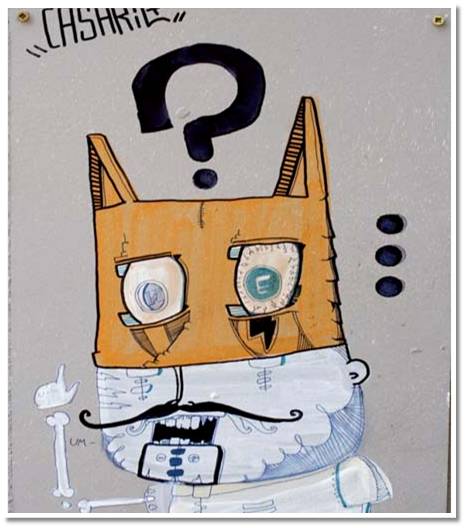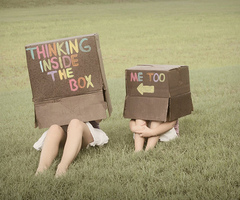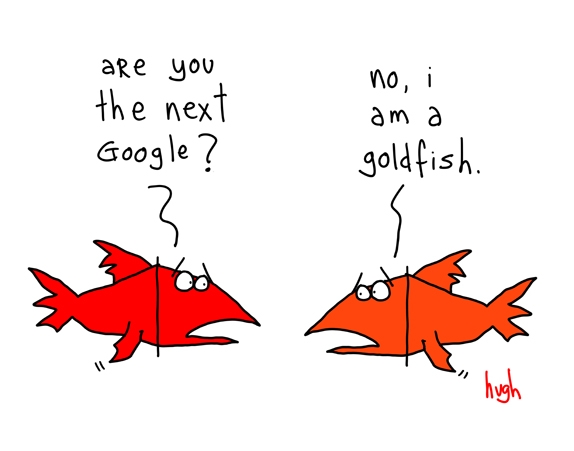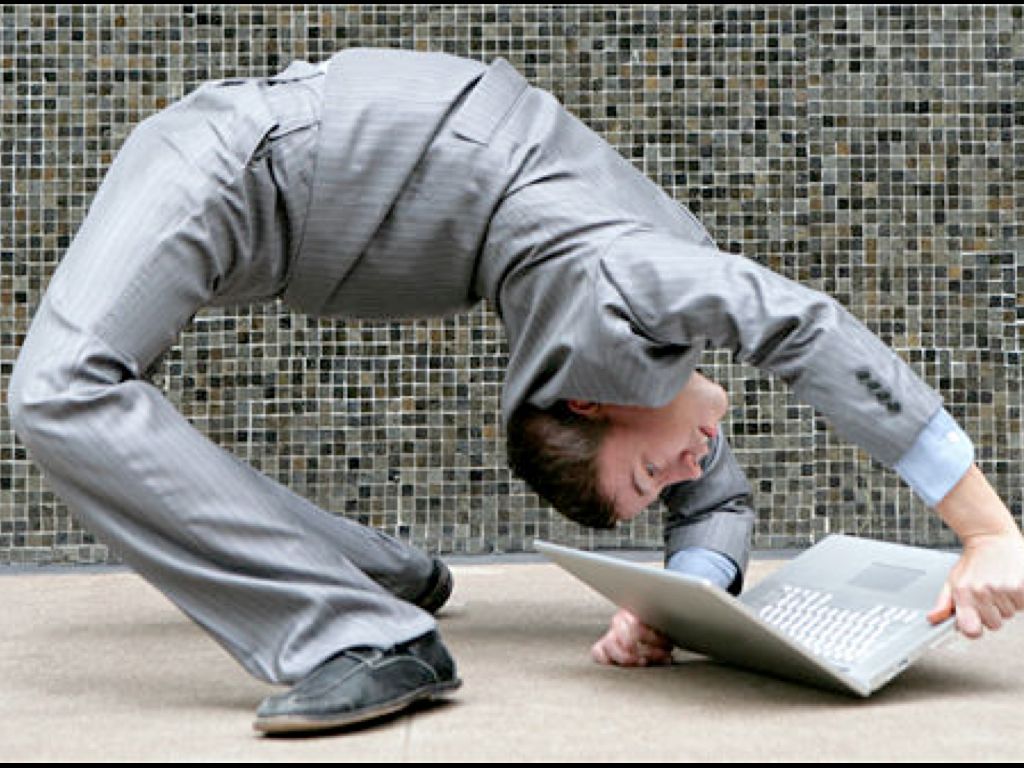Beyond Triggers - The Power of Glimmers
Beyond Triggers - The Power of Glimmers by Elaine Rumboll
Intro: In an age of "Triggers," a counter-impulse known as "Glimmers" emerges, offering an accessible means of fostering joy and peace.
In Patrick Rothfuss' captivating novels, "Glamours" are enchanting spells that project an illusion of wealth, beauty, and well-being to enhance the appearance of people and objects. While these illusions may be fleeting, there is a way to build your own version of Glamours through "Glimmers." Researcher Deborah Dana has identified micro-moments that can have a lasting impact on our happiness. In a world full of "triggers," it's not surprising that "Glimmers" are gaining recognition. These brief moments can evoke feelings of joy or tranquillity, signalling to our nervous system that it's safe to relax.
Deb Dana, a licensed clinician social worker specialising in complex trauma, first coined the term "Glimmers" in her 2018 book, "The Polyvagal Theory in Therapy." Glimmers are fleeting moments that incrementally transform our systems. They can be found in nature's beauty, the company of animals, and the warmth of a stranger's smile. These Glimmers resonate with our minds due to the energy they emit. While everyone can benefit from acknowledging Glimmers, those who have experienced trauma may find them particularly valuable for fostering compassion and resilience. Our minds are wired to detect and solve problems, keeping us physically safe but potentially draining our emotional and psychological resources. By consistently recognising and appreciating minor, positive experiences, we can reshape our systems to foster mental and physical well-being. In this way, "Glimmers" evoke feelings of relaxation and hope, contrasting sharply with "triggers," which can activate stress responses.
Glimmers manifest in various forms, such as transient moments of natural splendour, a stranger’s kindness, or brief sensory experiences bringing inner calm or delight. Glimmers are tiny, often private moments that serve to lift the corners of your mouth for an instant. It could be as small as experiencing the texture of a fabric, the smell of jasmine on the wind, a birdcall in the early morning, a smile from a stranger in traffic.
Glimmer hunting can also include:
An intentional Awe walk immersing oneself in nature's grandeur, whether through strolls in the park, lakeside relaxation, or sunrise and sunset viewings.
Listening to uplifting or soothing music to improve mood and calm nerves.
Engaging in acts of kindness for oneself or others to elevate collective spirits.
Practising meditation or deep breathing to reduce stress and anxiety.
Cultivating gratitude by reflecting on blessings or maintaining a gratitude journal
To embrace Glimmers, set an intention for yourself, such as seeking out one Glimmer before lunch. A Glimmer journal can serve as a repository for daily reflections and discoveries, and sharing your Glimmer journey with loved ones can foster deeper connections. By granting ourselves permission to pursue positive feelings and experience these ephemeral Glimmers, we signal to our bodies a state of well-being and ease. The more we practise Glimmer-hunting, the more likely we are to uncover a wealth of Glimmers that anchor, protect, and soothe us. By consciously attending to these moments and intentionally seeking them out, we can create our own lasting enchantments and ultimately attain a more sustainable sense of ease, contentment and calm. In a world focused on triggers, Glimmers provide a vital counterbalance, reminding us to cherish the small moments of joy and serenity that fill our days.
Building Your Own Glimmer WorkSheet
Set aside an hour for this exercise. Find a comfortable position to sit in. Put a heavy shawl around your shoulders as you do this exercise. Do three rounds of breathing in through your nose for 4, holding for 6 and breathing out through your nose for a count of 8. Drop into your body and stay there. Repeat the breathwork when you feel like you are going back into your head.
1. Explore what makes you happy, what makes you feel peaceful and comfortable, and what sparks pleasant feelings for you. The following suggestions could serve as prompts for you:
What activities in your free time bring you joy?
Which sensations (sights, sounds, smells, textures, movements) do you find the most calming or enjoyable?
When you think back on your life, what small moments or experiences have made you the happiest?
Make a list of all these things and don’t self-edit yourself.
2. Once you have a list of possibilities, pick one or two that you want to actively pursue and enjoy in the days ahead.
3. Make it your mission during the following three days to actively pursue and enjoy the glimmers of happiness that most appeal to you. Planning a specific activity or just keeping an eye out for happy moments in your daily routine can help.
4. Pay close attention to the physical and mental effects of your chosen glimmers as you seek them out and experience them. How do they make you feel? How does your body react when you go through these things? Have you noticed a shift in your disposition, vitality, or perspective?
5. Finally, think about how your glimpses have strengthened your hope and resilience. How did actively seeking out and enjoying these joyful times aid you in weathering times of difficulty or stress? What did you learn about your emotional needs and how to meet them?
Remember, the goal of exploring Glimmers is to cultivate a habit of seeking out and appreciating the small moments of joy and connection in your daily life. By intentionally cultivating positive experiences and emotions, you can build emotional resilience and promote well-being even in the face of stress and adversity. It’s time to Get Your Glimmer On!
The Agile Leader's Toolkit
 For deep sustainability to have legs, teeth and even hair, we need an organisational ethos which promotes fluidity and adaptability. There has been much talk of the current need for agility in organisations and according to McKinsey how in the next five years it will become even more critical. But what exactly is Agility and as a leader how do you practice it? To my mind, the notion of Agility is an umbrella term for a set of leadership capabilities that I think serve as a prerequisite for developing high impact leadership practices today.
Counter to popular belief, one does not match the speed of the environment by trying to “just go faster”. An agile leader does not respond to a faster moving business environment by trying to match the speed thereof. Instead they work with a different order of things, finding ways to adjust their own behaviour and perspective. As Rumi said, “Yesterday I was clever, so I wanted to change the world. Today I am wise, so I am changing myself”. Agile leaders are leaders who are able to reflect, see possibilities and reframe their thinking constantly. They understand the importance of adaptability, grace in failure, curiosity, collaboration, back up, diversity, ease of access and the ability to forecast. By slowing down to build the practices which deliver results in today’s environment they are able to match the pace required.
For deep sustainability to have legs, teeth and even hair, we need an organisational ethos which promotes fluidity and adaptability. There has been much talk of the current need for agility in organisations and according to McKinsey how in the next five years it will become even more critical. But what exactly is Agility and as a leader how do you practice it? To my mind, the notion of Agility is an umbrella term for a set of leadership capabilities that I think serve as a prerequisite for developing high impact leadership practices today.
Counter to popular belief, one does not match the speed of the environment by trying to “just go faster”. An agile leader does not respond to a faster moving business environment by trying to match the speed thereof. Instead they work with a different order of things, finding ways to adjust their own behaviour and perspective. As Rumi said, “Yesterday I was clever, so I wanted to change the world. Today I am wise, so I am changing myself”. Agile leaders are leaders who are able to reflect, see possibilities and reframe their thinking constantly. They understand the importance of adaptability, grace in failure, curiosity, collaboration, back up, diversity, ease of access and the ability to forecast. By slowing down to build the practices which deliver results in today’s environment they are able to match the pace required.
I have developed a toolkit which I hope could serve as a checklist for organisations who are interested in constructing sustainable leadership practices in their organisations - a sustainability which is both palpable in the conversations which their employees have but one which also drives the operations and the decision making processes their leaders engage in daily.
In order to build Agility into the DNA of one's leadership practice, there are nine things which I think are required. I have tried to list these from A-I for ease of reference:
Adaptability Back Up Curiosity Diversity Ease of Access Foresight Grace in Failure Hubs Inclusiveness
Adaptability (Flexibility): We need to be ready to change our plans when they are not working the way we expected. In a world where the rate of change happens faster than our ability to respond to it, how do we change course mid direction? We need to build a healthy robustness around how we are going to react. We can no longer count on things remaining stable. The question is how have you created alternatives for yourself.
Sappi for me, is an interesting case in point. The largest producer of coated fine paper in the world, when faced with a downward trend in their market, went out and bought the second biggest producer. Instead of genuinely engaging with what they could do differently, there seems to be an embracing of more of the same. It has not helped to bolster their share price. The reality is, that it is no longer the survival of the fittest but those who are more able to be responsive to change who survive. What are the ways in which you can nurture your own ability to adapt? Bruna Martinuzzi is worthwhile reading on some quick wins on developing your own adaptability.
Backup (Redundancy): Backup, backup, backup. Perhaps the cardinal rule for an agility based economy is to never leave yourself with just one path of escape or rescue. Eskom, our very own generator of approximately 95% of electricity in South Africa, is a case in point. Faced with a backload of energy shortfall, Eskom has taken on a US$3.5 billion debt to the World Bank to build a coal smelter - which is teneted on old technology and directly generates disastrous environmental consequences for us. Says South African professor Patrick Bond: "South Africa's five-fold increase in CO2 emissions since 1950 and 20% increase during the 1990s, can largely be blamed upon the attempt by state electricity company Eskom, the mining houses (led by Anglo American) and huge metals smelters (especially BHP Billiton) to brag of the world's cheapest electricity. Emitting 20 times the carbon tonnage per unit of economic output per person than even the United States, South African capital's reliance upon fossil fuels is scandalous." A quick solution based on an immediate gratification but one which I believe will have long term implications for our labour market and export sector. Failure to back up in the demand side of their business has resulted in an economic debt which will have dire social implications.
 Curiosity
Curiosity cues our attention. It provides a lens for what we focus on. It emerges when the mental model we use currently is disrupted. One may have one of two responses - judgement or curiosity. Judgement will shut down new possibilities whereas curiosity will allow one to see other alternatives. As it requires that one’s way of seeing be challenged it more often than not demands that we look outside of the discipline we know to see other alternatives. According to Todd Kashdan (2009), lack of curiosity is a breeding ground for stereotyping and discrimination, inflated confidence and ignorance that can lead to poor decision making, dogmatism and rigidity of thought. An agile leader is a curious leader.
Curiosity
Curiosity cues our attention. It provides a lens for what we focus on. It emerges when the mental model we use currently is disrupted. One may have one of two responses - judgement or curiosity. Judgement will shut down new possibilities whereas curiosity will allow one to see other alternatives. As it requires that one’s way of seeing be challenged it more often than not demands that we look outside of the discipline we know to see other alternatives. According to Todd Kashdan (2009), lack of curiosity is a breeding ground for stereotyping and discrimination, inflated confidence and ignorance that can lead to poor decision making, dogmatism and rigidity of thought. An agile leader is a curious leader.
Diversity: If you don't rely on a single kind of solution, you won't suffer from a single point of failure. This is perhaps the greatest and most significant contribution South Africa, as a nation can offer. After all, it is embedded into our ecolological DNA. Take Fynbos. In the Western Cape alone, there are 2200 species on Table Mountain. They coexist harmoniously and if after 8 years, if they don't experience fire, they die. Multiple perspectives allow multiple entry and exit points to challenges we are facing. If we don’t face the fire of our judgement and opinions the likelihood of them surviving is questionable. And perhaps the measure should be having your ideas questioned every 8 hours rather than every 8 years.
Ease of Access: Don’t hide your systems-transparency makes it easier to figure out where a problem may lie. Share your plans and preparations, and listen when people point out flaws. I think Michael Jordaan of FNB is a shining example of this. As the CEO of one of the biggest banks in South Africa he has an active Twitter presence where he can share new developments in his market and quell fears regarding network breakdowns. The downside is that I have seen him have to be online at close to midnight giving systems updates and gets asked questions like what is the branch code for little known areas> However what  this ease of access has allowed is for FNB to stand out as a pioneer in what the worth of transparency is and what it can do for your brand.
this ease of access has allowed is for FNB to stand out as a pioneer in what the worth of transparency is and what it can do for your brand.
Foresight: As Nassim Taleb said, if we only knew how closely the word ‘prophecy’ and ‘foresight’ were aligned in Semitic languages we would be less confident about our abilities in that arena. You can’t predict the future. But as Bobby Godsell wisely said, “you can hear its footsteps approaching”. Think and prepare. It reminds me very strongly of the Truth & Reconciliation Commission set up in South Africa post independence. Nobody knew what the fallout of a devastating system of oppression would be, but introducing a systemised process which allowed people to share their stories in some small way eased a piece of the enormous burden of this history. The question to ask is what sort of practice can you build into your own leadership behaviour which builds an awareness of the foresight which might be required as an agile leader?
Grace in Failure: Failure happens, so make sure that a failure state won’t make things worse than they are already. In fact according to Thomas Watson, founder of IBM, "If you want to succeed, double your failure rate". The story of Mxit has always been an inspirational one for me. The genesis of Mxit was a multi player gaming platform. Scripts had been developed, actors cast. When tested with their user base the overwhelming response was that people wanted a place to talk and share on mobile. Instead of fighting the need, the developers humbly listened to their followers and built what has become the largest social network in Africa.The acceptability of this is so common now that Silicon lexicon has introduced a word called Pivoting for it. What you start with will probably not be what you end up with. Instead of seeing this as a failure it is instead a sign that you are on the right track.
Hubs (Decentralization): Centralized systems look strong, but when they fail, they fail catastrophically. The recent rumblings of consolidating all the provinces into one centralised system strikes somewhat of a warning bell. There has been much debate around the value of matrix organisations and decentralised units. What allows a decentralised system to perform is when it has a centralised node of trust. Agility demands that there been an alignment between principle and action. Centralisation without trust is a potentially catastrophic fail.
 Inclusiveness (Collaboration): The reality is that we are all in this together. Take advantage of collaborative technologies, especially those offering shared communication and information. I think the open source operating system built from Linux core architecture called Ubuntu led by SA tech billionaire Mark Shuttleworth is an inspiration. The open source approach enables the OS to develop in line with the market needs, as it develops and grows through various contributing developments and thus 'scratching their own nearby itch'. Although the software is free, the premium offerings , like IBM come at a fee. This collaborative, 'the more you share, the more you win' approach has generated extraordinary results for both business and education. Coursera is another exciting new development with a host of Ivy league schools in the States creating 123 free online offerings by seasoned academics like Dan Ariely whose course on Irrational Behaviour I look forward to taking in March 2013.
Inclusiveness (Collaboration): The reality is that we are all in this together. Take advantage of collaborative technologies, especially those offering shared communication and information. I think the open source operating system built from Linux core architecture called Ubuntu led by SA tech billionaire Mark Shuttleworth is an inspiration. The open source approach enables the OS to develop in line with the market needs, as it develops and grows through various contributing developments and thus 'scratching their own nearby itch'. Although the software is free, the premium offerings , like IBM come at a fee. This collaborative, 'the more you share, the more you win' approach has generated extraordinary results for both business and education. Coursera is another exciting new development with a host of Ivy league schools in the States creating 123 free online offerings by seasoned academics like Dan Ariely whose course on Irrational Behaviour I look forward to taking in March 2013.
We live in a world with high degrees of complexity, uncertainty and inequality. In order to be able to do effective, meaningful and impactful work we require a different set of leadership practices. I would be curious to hear about some of the leadership practices you have started to build to make agility a daily part of your leadership toolkit.
Deep Linking Leadership Development to Organisational Behaviour
 In the past decade much of the truly transformational leadership work happening in organisations has been driven from a place of self mastery. This approach is however being challenged by Daniel Kahneman, a Nobel Prize-winning psychologist and the author of the new book “Thinking, Fast and Slow,” who shows by categorising our cognitive flaws, that knowing oneself is not enough, not nearly enough to be the effectual leaders we need to be.
Separate research released in September 2011 by the Minneapolis based consultancy Modern Survey also indicate a set of findings which show that the highest levels of employee engagement comes from a place other than Self. What the survey reveals is that the highest correlation between employee engagement are not appreciation, career development and recognition which have been taken as de rigeur. Instead, it is the willingness of organisations to be transparent, honest and to instil confidence in the future of their businesses that is driving higher levels of engagement in employees.
In the past decade much of the truly transformational leadership work happening in organisations has been driven from a place of self mastery. This approach is however being challenged by Daniel Kahneman, a Nobel Prize-winning psychologist and the author of the new book “Thinking, Fast and Slow,” who shows by categorising our cognitive flaws, that knowing oneself is not enough, not nearly enough to be the effectual leaders we need to be.
Separate research released in September 2011 by the Minneapolis based consultancy Modern Survey also indicate a set of findings which show that the highest levels of employee engagement comes from a place other than Self. What the survey reveals is that the highest correlation between employee engagement are not appreciation, career development and recognition which have been taken as de rigeur. Instead, it is the willingness of organisations to be transparent, honest and to instil confidence in the future of their businesses that is driving higher levels of engagement in employees.
This has a profound impact on what it is we are seeking to achieve with our leadership development programmes. It requires leadership development that is driven by the ethical positioning of organisations, and the willingness to build long term sustainable practices that employees can believe in.
It requires a realignment of how CEOs and their boards communicate but more importantly, of how they behave. This is where the real leadership development work happens and where frankly, the least is done.
Developing a sense of purpose in the work we do, managing our energy and attention at work is still critical, as is knowing how to be agile in the face of uncertain markets matters. But what seems to matter more is that we have a belief and an insight into how our leaders are running our organisations - that they are doing it with integrity and with an eye open for the long term sustainable future of the places we work in, not just with an eye on making a quick buck.
In sum, educators need to ensure when designing processes that they do not merely work at a microcosmic level, that the values of what they teach are deeply embedded into the way they teach. For leaders, it requires that the values which they purport to uphold are significantly visible in the action of their daily practices. And for directors of people management, talent and organisational effectiveness, it demands the procurement of processes which start from a place of identifying how the values of their organisations can be made clearly visible and easily emulated. This would go some way in engaging employees who as the research has shown, do genuinely want something authentic and lasting to believe in.
Creative Entrepreneurship – Going Beyond the Business Plan
 This is a post written for my Business Acumen for Artists students at UCT GSB.
This is a post written for my Business Acumen for Artists students at UCT GSB.
Background
Much of the criticism levelled against the use of a business plan for artists has been that many wanting to start a business have neither a need of venture capital nor a bank loan. Traditionally, business plans have been viewed as useful for these kinds of endeavours. I have changed the nature of this session to be focused on Creative Entrepreneurship because I do think there is a difference in how you should approach your business plan but am also in agreement that this kind of conceptualisation and planning are needed to start something which has validity and durability in the market - notwithstanding that it helps you build credibility with potential suppliers and customers. Thinking hard about what your business is really going to be about more clearly defines your offering and helps you notice the blindspots.
A business plan has been described as a roadmap – a way to plan how you get to your destination. Inherent in this thinking is the understanding that there is more than a singular way to get someplace. What are the resources, maps, means of transport you would need to get to where you need to?
Although a roadmap is important there are certain other things which I found to be as important. Firstly it is to understand the fundaments of what you are going to build. If your foundation is not strong enough, no manner of effort and determination will make it lasting. So the key question you need to ask yourself before you plan your journey is WHY?
What is the PURPOSE of what you want to build?
Next relates to the VALUES you will drive in your business.
What are the non negotiable in terms of what you want to build?
What are you going to stand for – what is the MANIFESTO behind what you are building?
What would make your business not worth doing?
Next comes the DIFFERENTIATION.
What makes your product/service special and different to other people operating in the same markets?
Define what you and WHAT YOU WON"T DO – by not being all things to all people, you generate a manageable lens for others to understand what your offering is and make it easier for them to choose you. don’t do everything.
What resources do you have?
Critical is the understanding of what your cashflow will look like. No matter how phenomenal your business is, without cash it will collapse.
What is your BURN RATE – how much does it cost to keep your business going? Daily, weekly, monthly and annually.
As this business plan is an EVOLVING document, it is important to revisit it monthly and ask yourself:
Where are we?
Are we on track – what do we need to do differently?
What have I learnt – what assumptions am I holding to be true which aren’t anymore?
Thanks to Dave Duarte for helping me formulate the questions for you!
Truths, Trends and Trifles in Business Education - A Hacker's Guide
 One of the most important issues we are currently facing as business educators, and certainly in the field of executive education is the ability to separate out the truths from the trends and the trends from the trifles. I am indebted to my partner, Dave Duarte for this elegant distinction between these three lenses. It is well worth reading his blog post on this as it relates to the problematics of Social Media strategies.
Truths
One of the most important issues we are currently facing as business educators, and certainly in the field of executive education is the ability to separate out the truths from the trends and the trends from the trifles. I am indebted to my partner, Dave Duarte for this elegant distinction between these three lenses. It is well worth reading his blog post on this as it relates to the problematics of Social Media strategies.
Truths
 The truth of what it is that you do will have an element which is unchanging. What is is in the nature of your work that is fixed and utterly aligned to your purpose? In my work it is the understanding that for leaders to have impact they need different practices - the ability to manage their energy and attention, working with questions rather than answers, seeing themselves as coaches and resources rather than controllers. This is the "why" of the work that I do. It is useful to spend an inordinate amount of time to really get to the nub of your why. In going slow to go fast here you really do create a landscape that you can align emergent trends around.Another way of articulating the "why" is perhaps around the idea of Purpose.
The truth of what it is that you do will have an element which is unchanging. What is is in the nature of your work that is fixed and utterly aligned to your purpose? In my work it is the understanding that for leaders to have impact they need different practices - the ability to manage their energy and attention, working with questions rather than answers, seeing themselves as coaches and resources rather than controllers. This is the "why" of the work that I do. It is useful to spend an inordinate amount of time to really get to the nub of your why. In going slow to go fast here you really do create a landscape that you can align emergent trends around.Another way of articulating the "why" is perhaps around the idea of Purpose.
Trends
Trends, on the other hand, are what are appearing on your horizon that are creating shifts in behaviour and will impact on the work you do. Trends are the "What". A trend is something which you can choose to see and align to your Why. Not every trend will be meaningful to the work that you do but if you can pick two or three things that have impact these are the ones to spend time on crafting alignment and responses. In my world, the trends that impact on what I do are the drive for responsible leadership, the attention economy, information overload, learning on demand, and the upsurgence of collaborative technologies. Understanding the importance of these trends allows me to craft responses that may well be meaningful in my search to help leaders bild practices that help them achieve greater impact - like using Curiosity as a lens to filter the quality of our attention, building a model around Productive Presencing which helps us manage our attention and energy at work, constructing an attention audit to help engage with negative voices in our heads and agility as a leader's toolkit for building practises that help us change course mid direction and encourage the perspectives of others in our decision making. Trends generally have upwards of a 15 year lifespan which means that their impact is significant.
Trifles on the other hand are those fabulously sexy tools which are here today, gone tomorrow. Like Zite, or Foursquare, Ning, Facebook or Twitter. They are the "How" of what it is we do - applications which we can use expediently to get our message across but which we can equally abandon for another platform which might serve us better at a later stage. One of the issues with the age we live in is that we are just too busy to make these distinctions and often risk pouring an enormous amount of energy and capital into trifles rather than the alignment of particular trends with our truths. Overinvesting in a trifle hurts your business and erodes your truth. Often the mistake trendforecasters make is to focus on the trifles whihc three years down the line are gone.
It is my hope that these three lenses will serve you well in your own decisionmaking around what to track and what to use. As a hack, it is really just about remembering what is the Why (Truths), what is your What (Trends) and what is your How (Trifles). In an information-rich world this might well be an important filter.
Happy hacking.
A talk to be given tomorrow at the EFMD Annual Conference in Brussels, Belgium.






